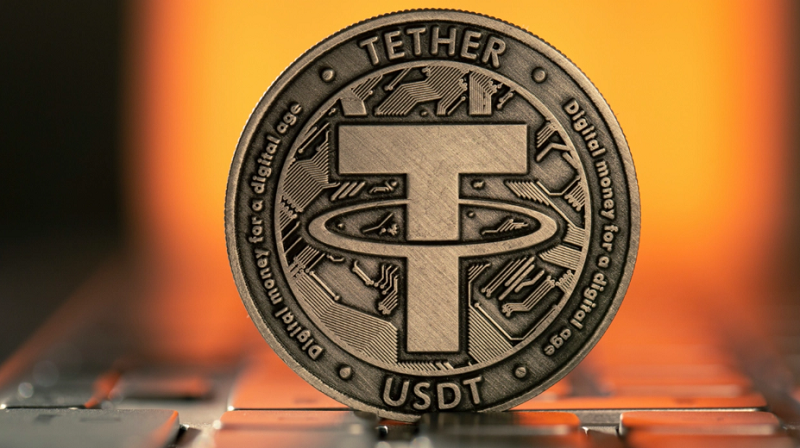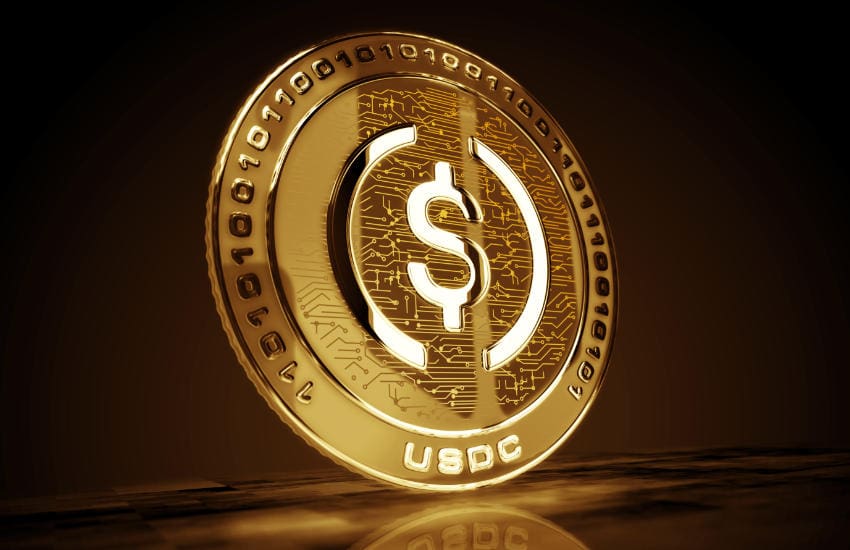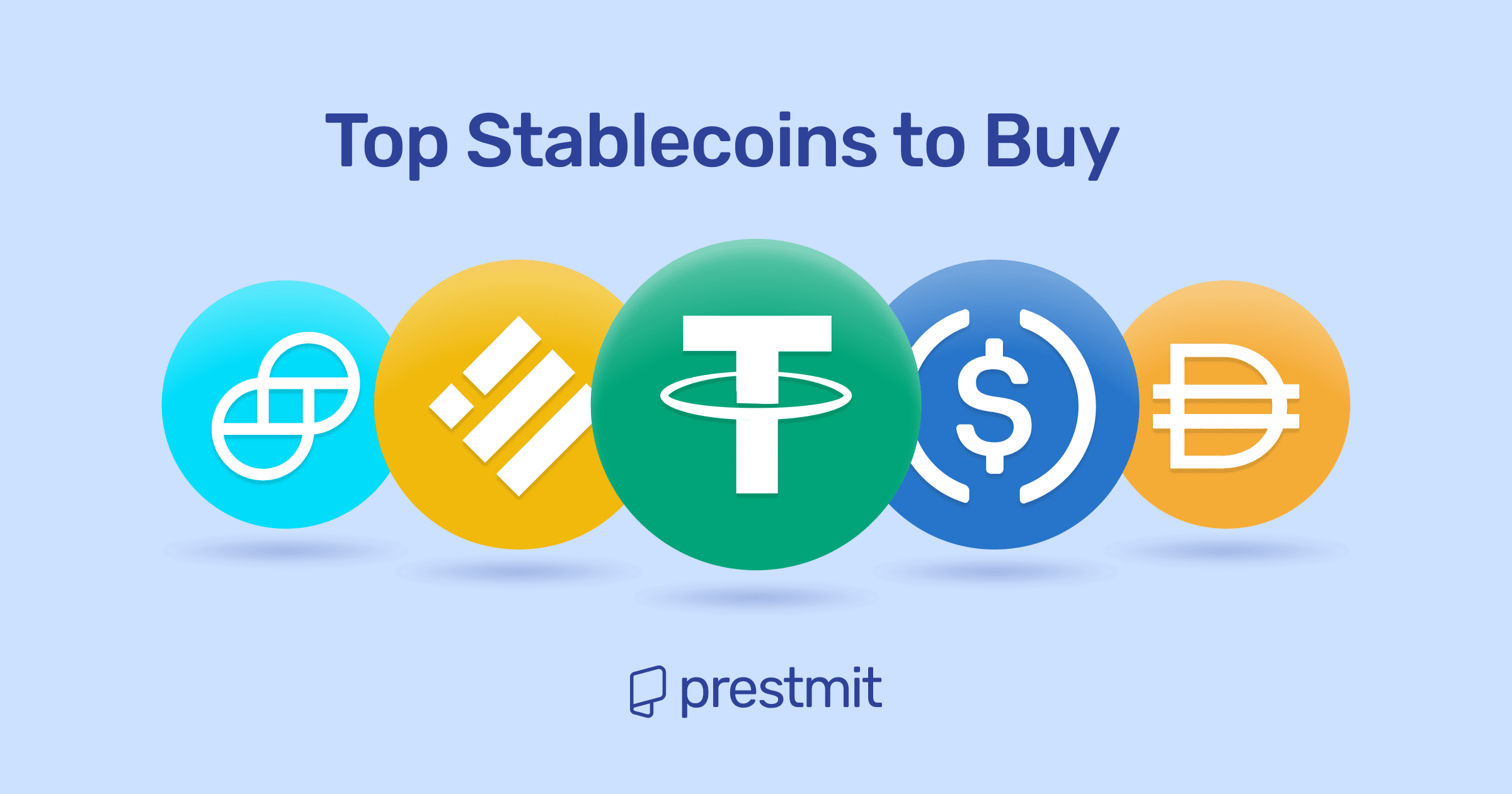Table of Contents
Price volatility has always been the heartbeat of the crypto market, unpredictable, relentless, and at times unforgiving. Between these constant price swings is Stablecoins which are designed to maintain a steady value by pegging their price to a stable reserve such as the US dollar, Euro, or even commodities like gold.
No wonder the stablecoin market surpassed $300 billion in total value. But not all stablecoins are created equal. Some have stronger reserves, better transparency, or wider adoption than others, and choosing the right one can make a big difference in how safe and useful your funds are. The right choice can protect you from volatility while giving you access to DeFi, trading, and cross-border payments with ease.
If you are looking to buy or hold stablecoins today, this guide will help you make an informed decision. It breaks down the top 5 stablecoins worth considering, how they work, why investors trust them, and what makes each one stand out in the evolving world of digital finance.
Top Stablecoins to Consider in 2025
1. USDT (Tether)

USDT remains the most widely used and traded stablecoins serving as the backbone of crypto trading pairs on both centralized and decentralized exchanges. USDT controls 45% of the total stablecoin market with a market capitalization above $110 billion. Tether is supported across virtually every major blockchain including Ethereum, Tron, and Solana giving it a level of flexibility few assets can match.
While USDT has faced transparency debates in the past, it continues to dominate trading volumes and remains the preferred choice for traders seeking fast and frictionless settlements.
2. USDC (USD Coin)

USDC is another stablecoins issued by Circle which has built its reputation on transparency. Backed by reserves audited monthly, USDC maintains a market cap of about $32 billion and represents 26% of all stablecoins transaction volume.
Each USDC token is backed 1:1 by reserves held in U.S banks with regular attestations confirming its stability. Over the years, it has become the go-to stablecoin for institutions, businesses, and DeFi protocols that prioritize trust and clarity.
Today, USDC remains a key player on networks like Ethereum, Polygon, and Avalanche. Its consistent growth and integration with major payment partners like Visa and Mastercard highlight its institutional trust.
3. DAI
Unlike centralized stablecoins, DAI stands out for its decentralized structure. It currently has a circulating supply worth $5 billion making it the largest decentralized stablecoin in DeFi (decentralized finance). DAI is a larger part of the Defi ecosystem powering borrowing and staking protocols across multiple blockchains. It also plays a vital role in lending protocols like Aave and Compound where it accounts for over 60% of stablecoins stablecoin-based lending pool.
DAI maintains its value through over-collateralization with cryptocurrencies like Ethereum and USDC. This decentralized approach gives users more control and eliminates reliance on a single entity or banking system.
4. BUSD (Binance USD)
BUSD is developed by Binance and Paxos and it has since then earned investors’ trust through its regulatory oversight and tight integration within the Binance ecosystem. It’s ideal for traders who want to minimize conversion cost while trading on Binance or interacting with its Defi platforms.
Although issuance slowed due to U.S regulatory pressure in 2024, BUSD still processes billions in monthly transactions and retains a market cap of about $3 billion. Within the Binance exchange, it remains one of the top three settlement tokens used for spot and futures trading.
5. TUSD (TrueUSD)
TUSD is one of the most transparent stablecoins on the market. With a current market capitalization near $2.5 billion, TUSD has grown steadily thanks to its real-time attestation system which verifies every few minutes through third-party APIs. Institutional adoption has also increased by 18% year on year due to this transparency model.
This commitment to real-time verification has made TUSD increasingly popular among those who value transparency over convenience. TUSD is supported on multiple chains such as Ethereum, Tron, and the BNB chain and it continues to grow in adoption as trust and regulation become central to stablecoin investment decisions.
Factors to Consider When Choosing a Stablecoin
1. Liquidity and Market Adoption
Liquidity is what gives a stablecoin real value in practice. A highly liquid stablecoin like USDT or USDC can be traded instantly across hundreds of crypto exchanges and wallets without slippage. Lower volume stablecoins might offer stronger transparency or compliance benefits but can be harder to convert in volatile market conditions. For traders and businesses, high liquidity equals reliability.
2. Risk Diversification
No single stablecoin is risk-free. Regulatory actions, reserve mismanagement, or smart contract exploits can all disrupt stability. That’s why diversifying across multiple stablecoins, combining fiat-backed and decentralized options is a smart move. It spreads risk across different issuer models and blockchain is helping you stay protected even if one asset encounters trouble.
3. Backing and Collateralization
Fiat-backed stablecoins like USDT and USDC are supported by cash or short-term government securities held by regulated custodians. They are ideal for users who want immediate convertibility and minimal fluctuation.
Crypto-backed stablecoins like DAI on the other hand use digital assets such as Ether or USDC as collateral. Understanding what underpins a stablecoin will help you gauge its true resilience during market stress.
4. Transparency
Reputable issuers like Circle (for USDC) and TrustToken (for TUSD) publish regular third-party audit reports showing their reserves. These disclosures help investors verify that each coin is fully backed and that funds are safely stored. If a stablecoin project doesn’t provide consistent verifiable audits, that is a red flag.
5. Regulatory Compliance
As governments tighten crypto oversight, compliance is also a defining factor in the future of stablecoins. Coins operating under a regulated framework such as USDC or TUSD tend to have stronger banking relationships and lower risks of suspension or delisting. Compliance also ensures integration with financial institutions and payment platforms which makes them more practical for long-term use.
6. Blockchain Support
A stablecoin utility depends on how widely it is supported across networks. Multi-chain availability on blockchains like Ethereum, Tron, Solana, or Polygon enhances liquidity and allows users to move funds across Defi platforms seamlessly. The more integrated a stablecoins is within the ecosystem, the more flexible and accessible it becomes.
How to Store Stablecoins
1. Centralized Exchange Wallets
For active traders, keeping stablecoins on centralized exchanges like Binance, Coinbase or Kraken offers instant liquidity and convenience. You can swap, stake, or convert assets in seconds. However, exchange wallets come with custodial risk, meaning you don’t have control over the private keys. To minimise this risk, use exchanges with strong security measures to avoid hacking or unauthorized access to your funds.
2. Non-Custodial Wallet (Hot Wallets)
Non-custodial wallets like MetaMask, Trust Wallet, or Coinbase let you retain full control over your asset. You hold the private keys, not the platforms. This gives you independence and direct access to your funds. That said, always secure your recovery phrases offline and beware of phishing attempts as online wallets are vulnerable to malware or social engineering attacks.
3. Hardware (Cold Storage)
For long term holders or institutions managing larger amounts of stablecoins, hardware wallets such as Ledger and Trezor offer the highest level of security. They store your private keys offline. This makes them immune to online hacks or exchange failures. While they require a bit more setup and cost, hardware wallets are ideal for investors who prioritize capital preservation over convenience.
4. DeFi Platforms and Yield Protocol
Many investors also store their stablecoins directly within DeFi platforms to earn passive income through lending, liquidity pool or staking. Platforms like Aave, Compound and Curve Finance allow you to generate yield while maintaining exposure to stable assets. However, this comes with smart contract risks, so it is important to stick to audited and reputable platforms and never lock in more than you can afford to lose.
5. Diversify Your Storage
A balanced approach is often the safest. Keeping small, spendable amounts in hot wallets for daily use while securing the majority in cold storage, offers both accessibility and protection. This hybrid strategy ensures your stablecoins are ready for quick transactions without exposing your entire portfolio to unnecessary risk.
Frequently Asked Questions About Stablecoins to Buy
What is the best Stablecoin to buy?
The best options remain USDT, USDC and DAI known for their strong liquidity, trust and wide exchange support. These coins have held up through market volatility and remain investor favorites.
Can Stablecoins lose value?
Yes, de-pegging can happen if reserves or market confidence weaken. However, top stablecoins like USDT and USDC usually recover fast due to strong backing and high demand.
How do stablecoins stay at $1
Stablecoins maintain value by pegging to real world assets such as the U.S dollar. They use cash reserves, crypto collateral or smart contracts to keep prices stable.
What are the risks of buying Stablecoins?
Risk includes regulatory changes, reserves mismanagement, de-pegging events and smart contract vulnerabilities on certain platforms. Diversify to reduce exposure.
Can I earn from holding stablecoins?
Yes. You can earn passive income by lending, staking or providing liquidity on trusted DeFi and exchange platforms that support stablecoins yields.
Conclusion
Stablecoins continue to serve as the bridge between traditional finance and crypto innovation. They provide the stability, liquidity and flexibility that makes them indispensable for payments, savings and trading across global markets. However, They are not one-size-fit-all assets. The best approach is to treat them as complementary tools. Start with reliable options like USDT, USDC and DAI but always prioritize transparency, security and verified reserves.
Also, diversifying across multiple stablecoins can help you reduce exposure to individual risks while maintaining access to global liquidity and earning opportunities in DeFi.
Last updated on October 8, 2025

